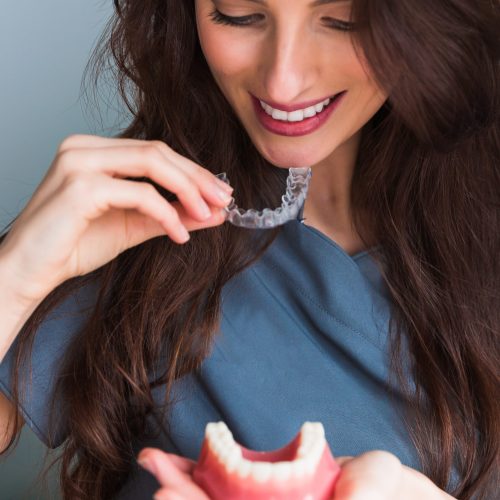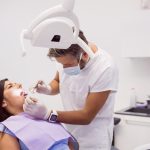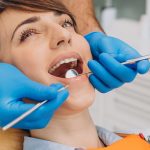
Orthodontics
Orthodontics is a specialized branch of dentistry focused on diagnosing, preventing, and treating misaligned teeth and jaws. The primary goal of orthodontic treatment is to enhance both the function and appearance of the teeth, which can ultimately improve overall oral health. Misaligned teeth can lead to difficulties in chewing, speaking, and even brushing, which increases the risk of tooth decay and gum disease. By addressing these issues, orthodontic treatments help create a more harmonious smile and improve dental function, contributing to long-term oral health benefits.
Orthodontics includes a variety of treatment options designed to correct alignment issues. Depending on individual needs, patients may choose from traditional braces, clear aligners, or lingual braces, all of which offer different levels of visibility and effectiveness. Whether the treatment involves subtle solutions like clear aligners or more traditional approaches like metal braces, orthodontic treatments are tailored to suit different lifestyles, ages, and dental concerns.
Invisalign
Invisalign is a popular orthodontic treatment that uses clear, custom-fitted aligners to straighten teeth gradually. Unlike traditional metal braces, Invisalign aligners are nearly invisible, making them a preferred option for those seeking a more discreet solution to teeth alignment. These aligners are made from smooth, comfortable plastic, and they are designed to fit snugly over your teeth. Each set of aligners is worn for about two weeks before being replaced with the next set in the series, gradually shifting the teeth into the desired position. Invisalign is typically used for mild to moderate alignment issues and is suitable for both teens and adults.
Lingual Braces
Lingual braces are a more discreet alternative to traditional metal braces. Instead of being placed on the front of the teeth, lingual braces are attached to the back, or inner surface, of the teeth. This makes them virtually invisible from the outside, offering a more aesthetic solution for individuals who need orthodontic treatment but want to maintain a more subtle appearance. Lingual braces work in the same way as traditional braces, using metal brackets and wires to gradually shift the teeth into their correct position. Although they may take some time to get used to, lingual braces provide an effective option for those looking for a less visible way to straighten their teeth.
Traditional Metal Braces
The most common type of orthodontic treatment, metal braces use metal brackets and wires to gradually move teeth into alignment. While more visible than clear aligners or lingual braces, they are highly effective and are typically recommended for more complex alignment issues.
Ceramic Braces
Ceramic braces are similar to traditional metal braces, but they use clear or tooth-colored brackets, making them less noticeable. These braces offer an aesthetic alternative while maintaining the effectiveness of traditional braces. Ceramic braces are a good option for individuals who require more extensive treatment but still want a less visible solution.
Self-Ligating Braces
Self-ligating braces use a unique mechanism that eliminates the need for elastic bands to hold the archwire in place. This not only reduces the amount of time spent in the orthodontist’s office but also results in less friction, leading to faster treatment times and greater comfort.
Orthodontics offers a range of solutions to correct misaligned teeth and jaws, allowing individuals to choose the best treatment based on their preferences and lifestyle. With advancements in technology and treatment options, there is a solution to fit almost any orthodontic need.










